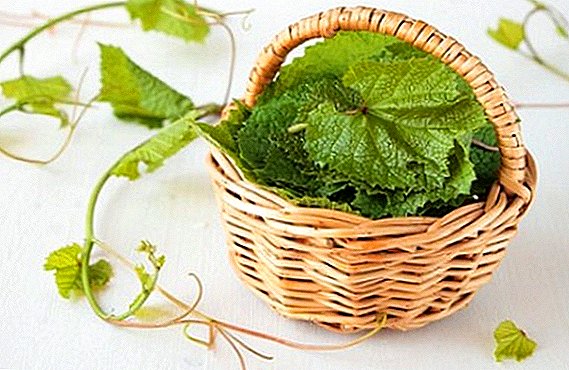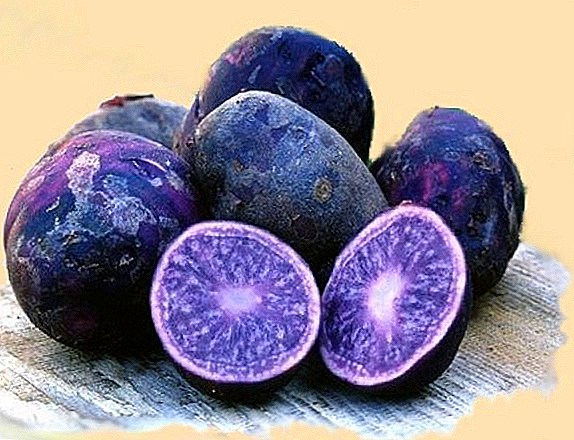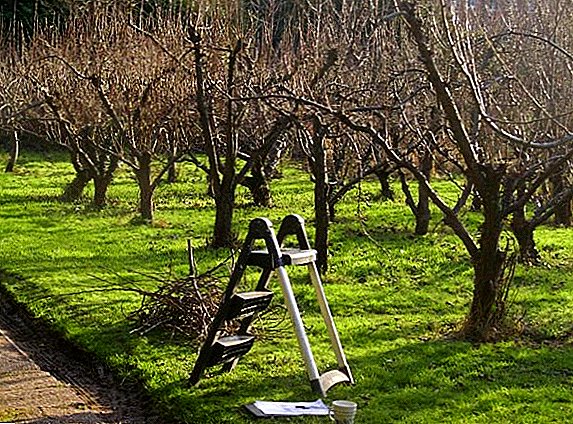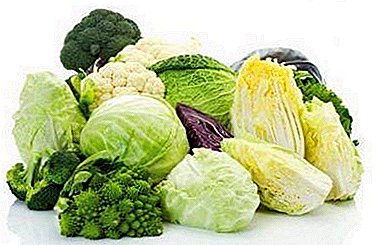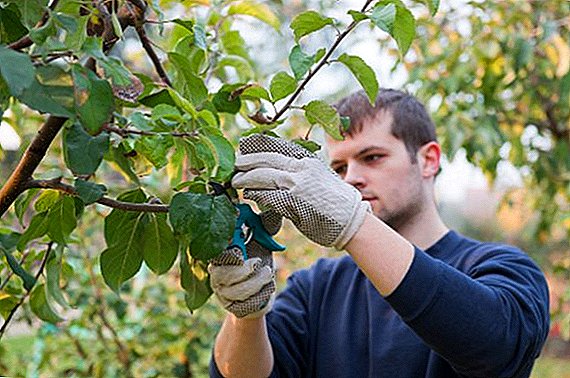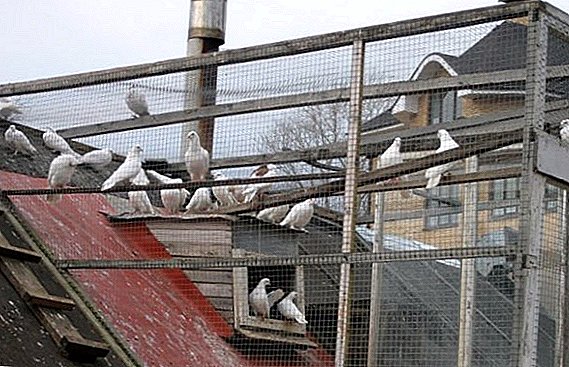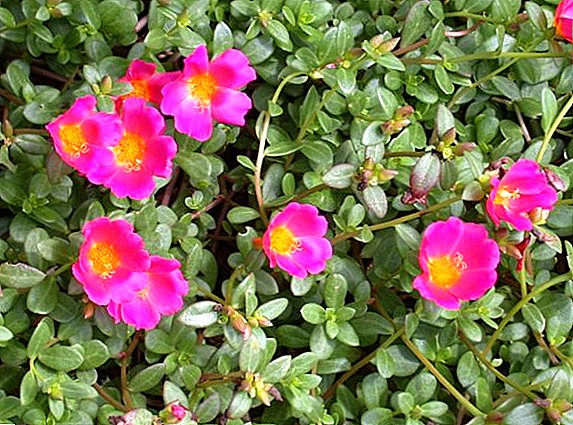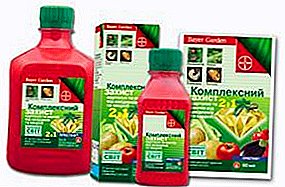
Some insects are dangerous inhabitants of potato plantations. The speed of reproduction, the number of crops eaten and the harm that they can bring, can cause a decrease in yield and even its death.
To protect crops from uninvited guests, insect control chemicals are used - insecticides that kill the pest, while remaining safe for humans.
Insecticides are pest control chemicals - are preparations made from chemical compounds that are used to kill insects that harm potato plantations.
Types of insecticides

Modern insecticides against the Colorado potato beetle divided into several types, depending on the route of penetration of the drug into the body:
- Contact - agents acting on the insect by direct contact chemical compounds with its skin.
- Intestinal - killing an insect after it enters the body with food.
- Systemic - are absorbed by moving through the vessels of the plant, and poison the insect that this plant eats.
- Fumigants - drugs in the form of gas or steam that destroy the insect through the tracheal system. Included in the fumigant mineral oils and silicates aimed at violating the functionality of the respiratory system of the pest.
Characteristic
For these drugs is characterized by a quick continuous action, high efficiency and low toxicity for humans. The characteristics of insecticides against pests are such that they have the ability to quickly decompose in the environment.
These remedies have only one drawback.: with the systematic use of one group of drugs, the pest control produces an addiction to insecticides. Colorado beetle quickly adapts to various chemicals. In this regard, it is worth changing insecticides from the Colorado potato beetle.
In order to avoid resistance, it is necessary to alternate drugs of different groups.
Act
By the nature of the action of insecticides, they are classified into:
- Drugs of continuous action, which are used to destroy various types of pests.
- Selective drugs that are used against a particular insect.
In the group of electoral funds insecticides are:
- nematocides - destroy nematodes (worms);
- acaricides - destroy only ticks;
- insectoacaricides are destructive for both ticks and other harmful insects.
Waiting time

Waiting time - the time interval between the last processing of potatoes insecticide and harvest, during which the remnants of the drug reach a safe level or destroyed.
The waiting period is due to:
- the duration of preservation of the applied drug;
- resistance to insecticide;
- toxic and hygienic properties means.
Insecticides and waiting times also affect:
- climatic and soil conditions;
- drug form;
- characteristics of the active ingredient of the insecticide.
Spraying
When spraying insecticide potato field You must remember the following rules:
- The drug must be thoroughly mixed. Usually, the first step in preparing a solution is to dilute it in a small amount of water. (approximately 1: 5).
After that, in the "mother liquor" add water to the desired concentration, which indicates the manufacturer of a drug. - The sprayer has to give small and (it is obligatory!) Continuous dispersion. For this procedure is not suitable broom colorful spray and other improvised mechanisms. The drug should be sprayed over the plant evenly, a small drop and not drip onto the soil.
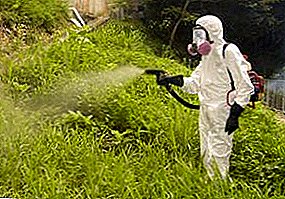
Processing is performed on all sides of the plant, including on the inner sides of the leaves, where insects usually lay eggs, as well as larvae. The lower part of the stems also subject to spraying.
- Spraying starts from the moment of full germination. Usually, early and mid-season potato varieties should be sprayed 2-3 times, processing of late-ripening varieties is carried out 3-4 times.
- Repeated arrangements for the processing of potato bushes are made immediately after how insects reappear. Upon contact with the poison, most pests die, but some simply weaken, so after a while they are ready to eat potatoes again.
Due to the fact that a pest develops addiction to a drug of the same type, it is not recommended to repeat the treatment with the same remedy.
Treatment
The choice of method of treatment of potato bushes with insecticides with insecticides due to the characteristics of the insect.
In addition to spraying, potatoes can be treated with insecticides in the following ways:
- Fumigation.
- Application to the soil with granules or powder.
- Treatment with an aerosol.
- Seed processing.
Consumption rate
For each type of insecticide to kill harmful insects, as well as for the funds of different manufacturers defined its rate of consumption of the drug. On the rate of consumption of insecticide, read on.
The most popular types of insecticides for protecting potatoes are the following:
From the Colorado potato beetle

- sumi-alpha - 0.15 kg (l) / ha;
- Actellicum -1.5 kg (l) / ha;
- Kerber - 0.1-0.2 kg (l) / ha;
- Senpai - 0.15-0.2 kg (l) / ha;
- arrivo - 0.1-0.16 kg (l) / ha;
- tanrek - 0.1-0.2 kg (l) / ha;
- Commander - 0.1 kg (l) / ha;
- buldock - 0.15 kg (l) / ha.
Insecticides to combat the Colorado potato beetle can be purchased at a specialty store.
From aphids
Insecticides for aphids are as follows:
- Bi-58 - 2-2.5 l / ha.
- Danadim (seed planting) - 2-2.5 l / ha.
- Shar Pei (seed planting) - 0.48 l / ha.
- Vitan - 0.48 l / ha.
- Rogor-S (seed planting) - 2-2.5 l / ha - one of the most effective means against aphids.
Insecticides against aphids can be purchased at specialty stores.
From slugs
Insecticides for slugs are as follows:
- SlugSTOP - 0.3 kg / ha;
- Slimeneed - 0.3 kg / ha.
From the grubs of the May beetle
Insecticides from larvae of the May beetle are a small assortment, eg:
- Fastak - 0.07-0.1 l / ha.
From tracks
See below for insecticides from caterpillars:
- Zolon - 1.5-2 liters (kg) / ha;
- Konfidor maxi - 0.03-0.04 l (kg) / ha.
Conclusion
The use of insecticides will help get rid of insects, which can cause irreparable damage to both plants and tubers and to maintain a high and high-quality crop of potatoes.
Useful video!




